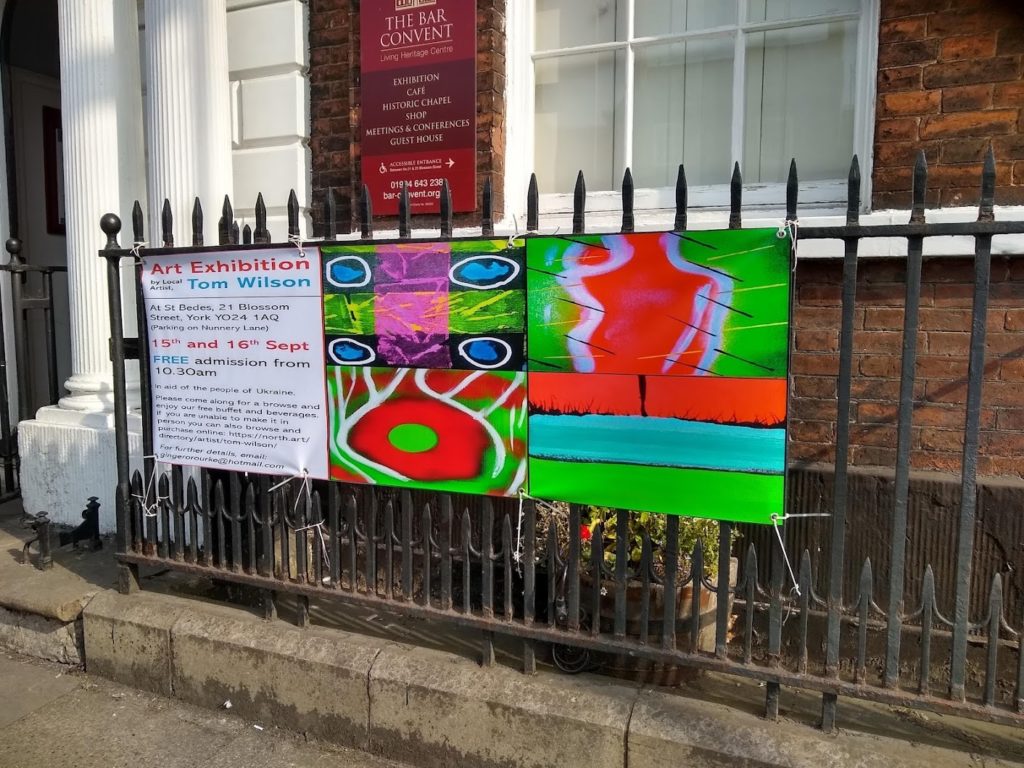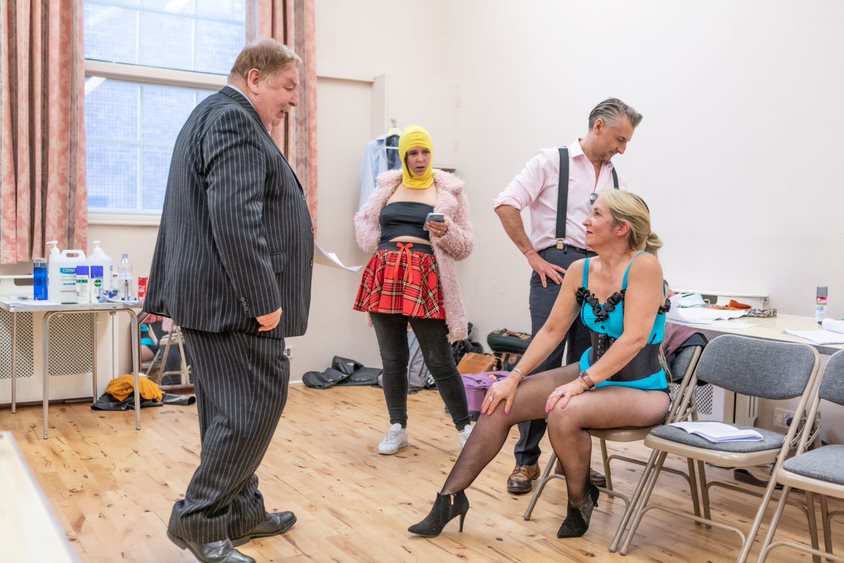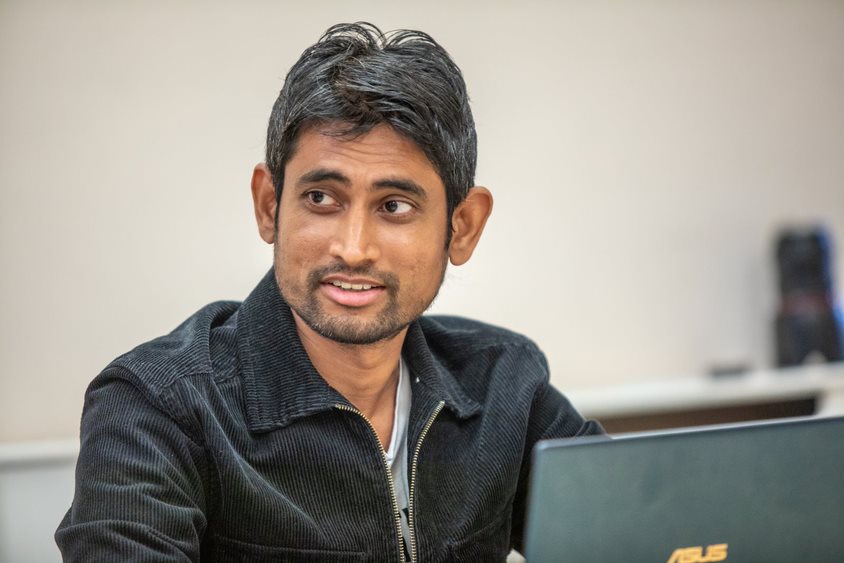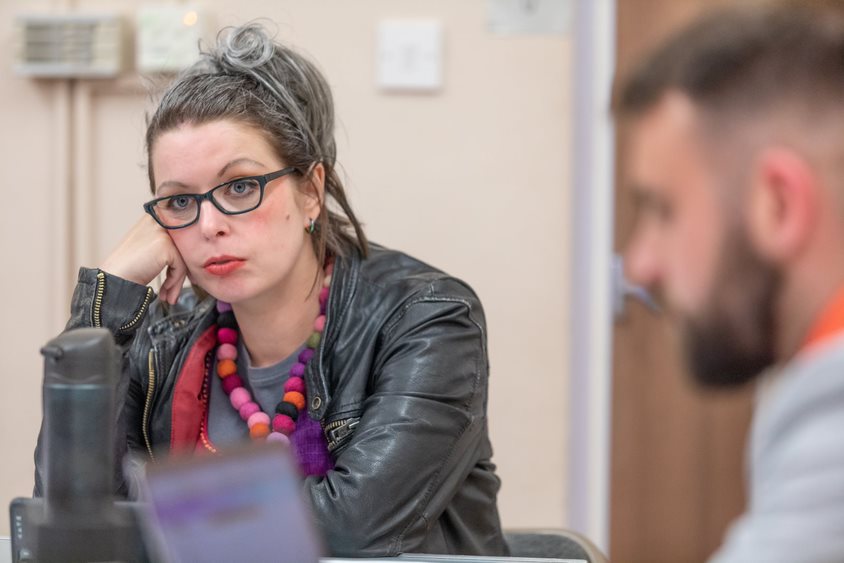
PROMPTED by his friends’ urges “to do something” with all that artwork filling his small York bungalow, Tom Wilson is to hold his first exhibition in ten years in aid of the people of Ukraine.
From 10.30am to 6.30pm tomorrow (15/9/2022) and Friday, myriad riots of colour by artist, playwright, theatre director and tutor Tom will be on display and for sale at St Bede’s, 21 Blossom Street, York, with free admission.
“I wish to thank the very kind and supportive staff at St Bede’s Pastoral Centre and the Bar Convent Living Heritage Centre,” says Tom. “They’ve been so accommodating. Just wonderful!
“There’ll be food and drinks available for all the visitors we’re expecting, and for those who’ll be disappointed they can’t make the exhibition, there’s still an opportunity to browse the work and purchase paintings online at https://north.art/directory/artist/tom-wilson/.”

Originally from Salford, polymath Tom has lived in York for more than 16 years and started painting in 1996 after the loss of a good friend to cancer while living in Roehampton.
“I found it a comforting therapy and a kind of a healing activity,” says Tom, who has held three previous shows, the last one taking place in 2012 at the Friends’ Meeting House, in Friargate, to raise funds for the Haiti Earthquake Foundation.
“Starting to paint helped me to process losing this friend, who died very quickly, at only 50 years old. I did this painting, The Night Form, which was like an apparition, or typically what a kid would think of. Adults can think of things that are scary, but children’s minds go to places where there’s no structure, it’s just endless, so their experience is darker.
“But once you articulate something, get it on to a page or a canvas, it becomes less terrifying. More manageable. That’s how I felt.”
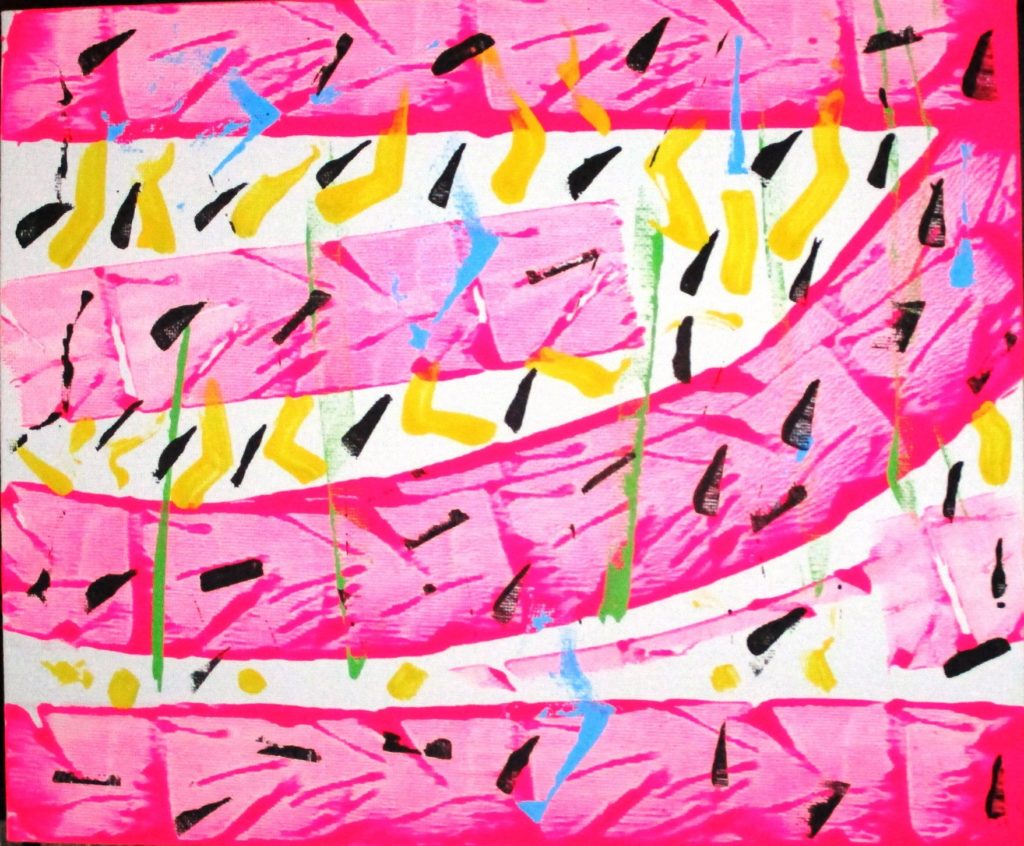
Linking his painting past to his present, The Night Form will be on show at St Bede’s among the newer works.
“After living in London for more than 20 years, York gives me incredible peace of mind,” he says. Peace of mind that leads to Tom’s artistic expression both as an artist and playwright, as witnessed in August last year when council chaos and Covid clashed in his timely anarchic farce The Local Authority, presented by the Naloxone Theatre Ensemble at the Joseph Rowntree Theatre.
He is delighted to be mounting his first exhibition in a decade. “At least if I sell one or two paintings, I’ll be able to find my way in and out of the kitchen without risking life and limb,” says Tom, who is disabled and lives alone with his cat, Pendle. “I’m hoping to sell enough to make a difference by sending proceeds to support the people of Ukraine.
“It’ll definitely help with clearing out my bungalow. I got a new shed but filled that up within a day; I was going to try to use it as studio but that never came off! So I just use whatever space I’ve got, the kitchen mainly, but it’s not ideal. Unless you’re moving work on, there’s no point doing new work as it just clutters the place up.”
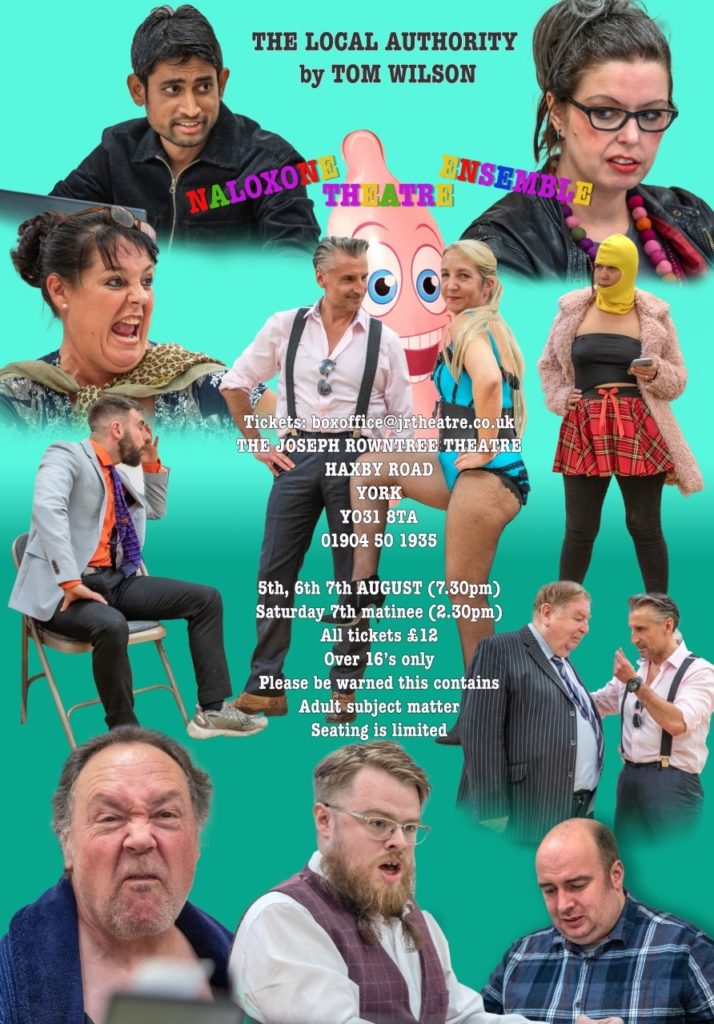
His dynamic abstract artwork is influenced by Kandinsky, Max Earnst, Otto Dix, Outsider art, German Expressionism and Rayonism (Russian Expressionism). “Rayonism was like a punk movement, breaking away, to try to paint ‘rays of light’, and I took my ideas from their freedom from convention.
“However, it’s also important to find your own voice and your own style,” he says, after being excited and motivated by seeing multiple visceral and dramatic pieces of art.
“I tend to use lots or orange and green in my work, and I think it’s all about the volume, not as in ‘amount’, but as in ‘turning up the amp’, like Jimi Hendrix did with his guitar, so the volume goes up.”
To achieve that Hendrix hum in his art, Tom favours painting on black boards, applying orange, Irish green and turquoise, mystical colours that “conjure up a feeling of vibrations”.
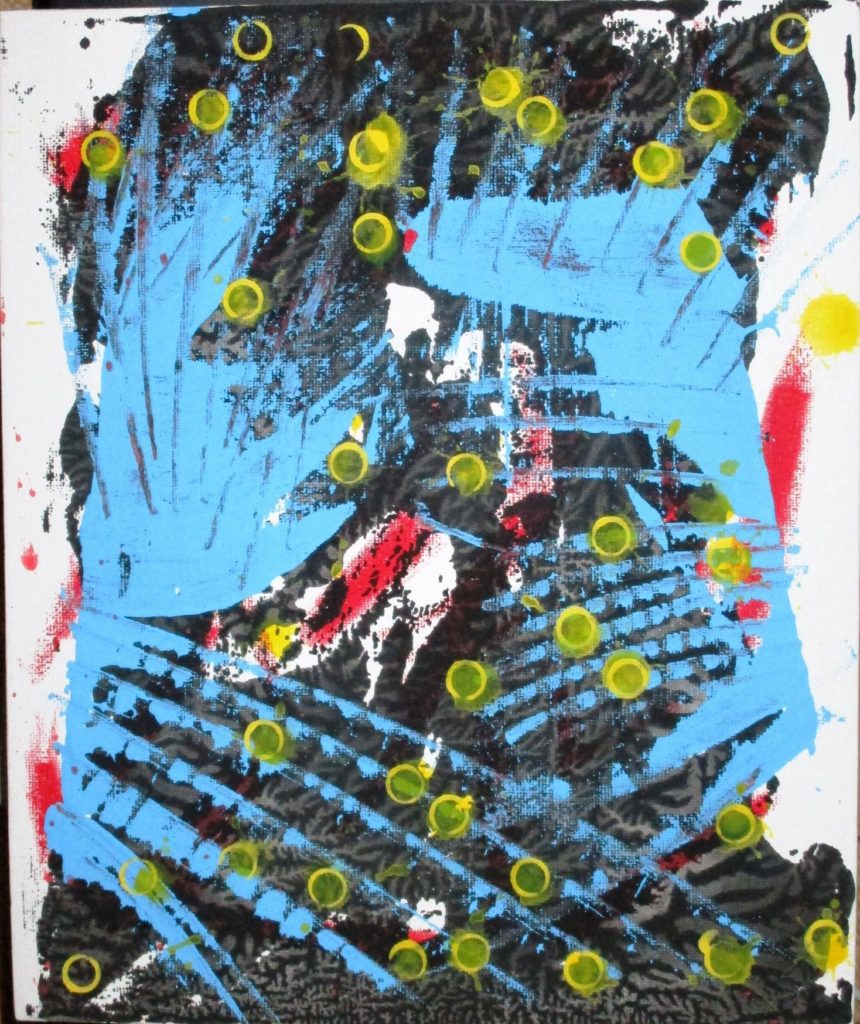
“I’ve been using Sennelier crayons, oil crayons rather than wax ones, that are very soft, almost like lipstick, and not easy to work with. Picasso first commissioned them; they were made just for him, when he was struggling to find exactly what he wanted.
“A studio said to him, ‘you tell us what you want, we’ll make it for you’, and if it was good enough for Pablo Picasso, then it’ll do for me!”
Describing his artistic style, Tom says: “There’s a lot of happy accidents with my stuff. Some of it is manipulated experiments, like putting paint on one canvas, then putting another canvas on top of that and then pulling them apart like layers of skin.
“Sometimes it’s about ‘unlearning’ something that you loved or remembered in a painting and just going for it.”
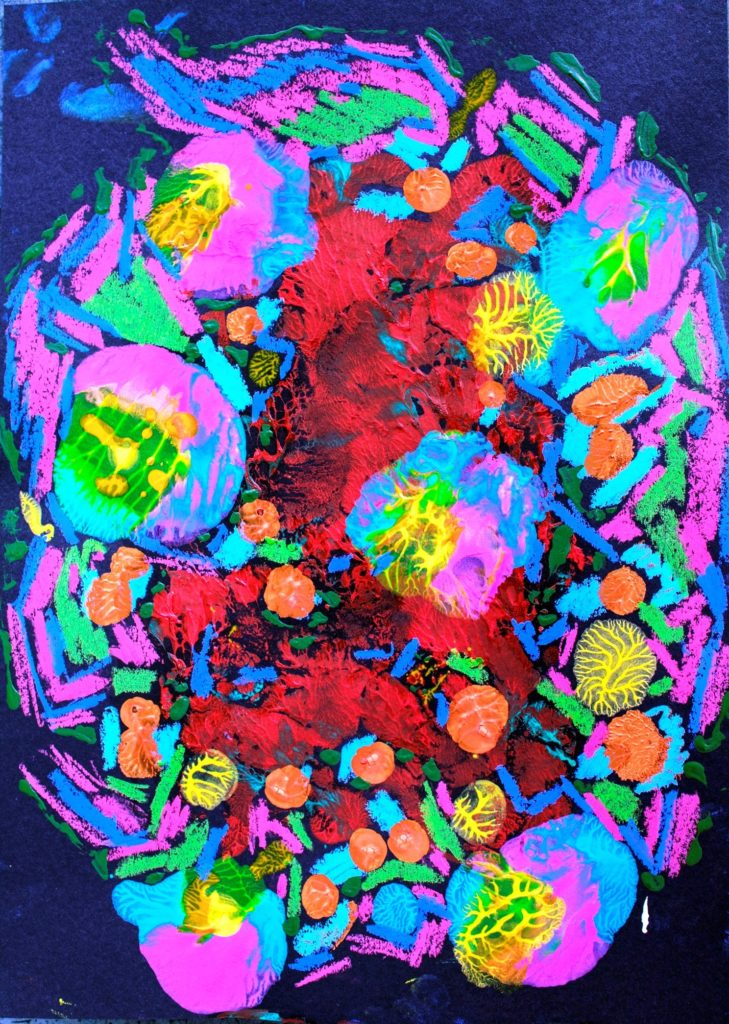
In a moment of sudden candour, Tom says: “I can’t paint! My art looks like an explosion. I’ll be honest, I think I’m a chancer, not a natural-born painter. I can’t even draw. I’ll draw a dog and it looks like a dinosaur…an angry dog!
“But it’s important to have that freedom. Art isn’t a competition; it’s the way you articulate something. That’s the essence of creativity.
“Painting is like a voyage of discovery for me. Maybe other artists start with a painting they loved, maybe a seascape, but I’ll start without a plan. I’ll start with a mood, then make a shape, maybe a curve, and start following it, like jazz musicians improvising. It’s about the vibe, just as it is with jazz.
“Again, rather like music, I can do ten paintings to arrive at the one I want, so those ten paintings are like a rehearsal to get to where I need to be. You don’t show people the departure point; you show them the arrival.”
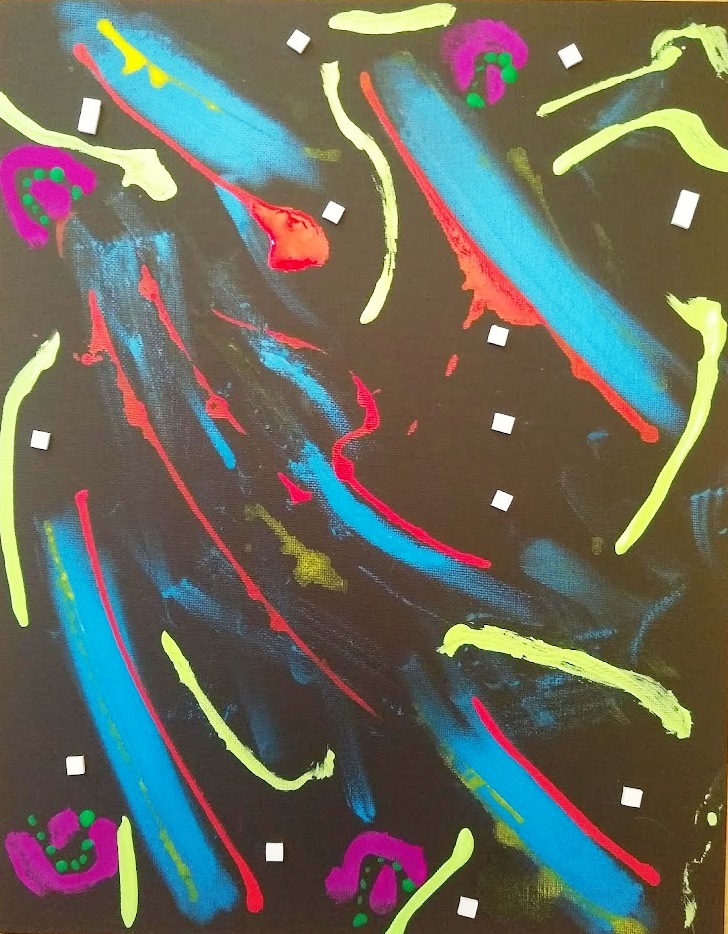
He makes a further comparison with the jazz world. “Ask Ornette Coleman or Thelonious Monk what they’re going to play, and they’d say, ‘I don’t know’ and then start playing. It’s the same with one of my paintings,” says Tom.
“On top of that, I think it’s about expressing an anarchic humour, like John Lennon, Salvador Dali, Picasso.
“What happens is you go into an inner-child mentality, almost like writing with the opposite hand, and you find an area to explore and then the adult takes over to say, ‘right, we’ll take it this final point’.”
Tom loves applying boldness in his work; he can go four days without painting then suddenly have a flurry of six in two days, rampant with all those orange and green outbursts, and even applying Tippex, but not to correct faults! “No, it’s because it’s always ultra-white, almost like false teeth, whereas white paint can go grey,” he clarifies.
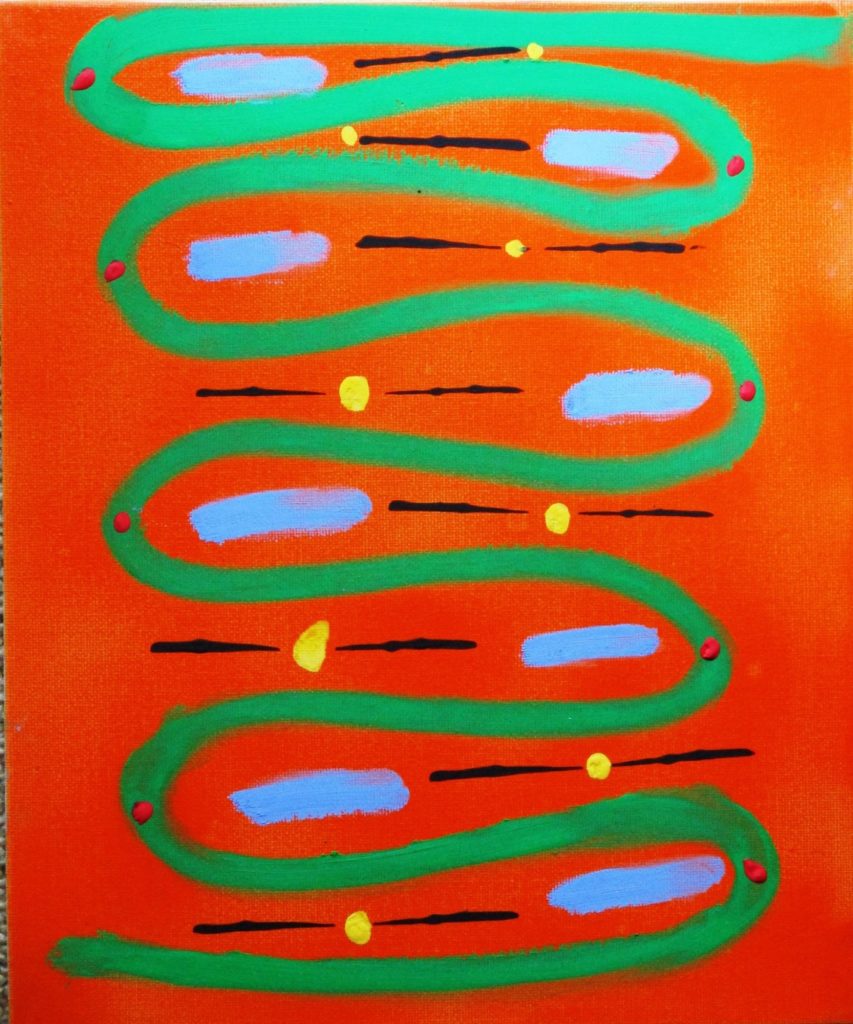
The challenge with each painting is “knowing when to stop, that cut-off point”. “That’s one of those lessons I’m still learning. Don’t keep going back to it. Don’t be the ‘Tinker Man’, like Claudio Ranieri!” says Tom.
As for size, in the absence of a studio, in the confines of his kitchen, he tends to use A3 or A4. “But I’d love to be like Rothko, lobbing paint around a big studio!”
In the meantime, Tom’s rather more compact jazzy paintings at St Bede’s will be priced from £60 to £400. “But for those who can’t afford some of the artwork, there’s an alternative way to support the plight of the people in the Ukraine, by buying one of the T-shirts on sale,” he says. “They feature images of my art and very fine they look too.”
